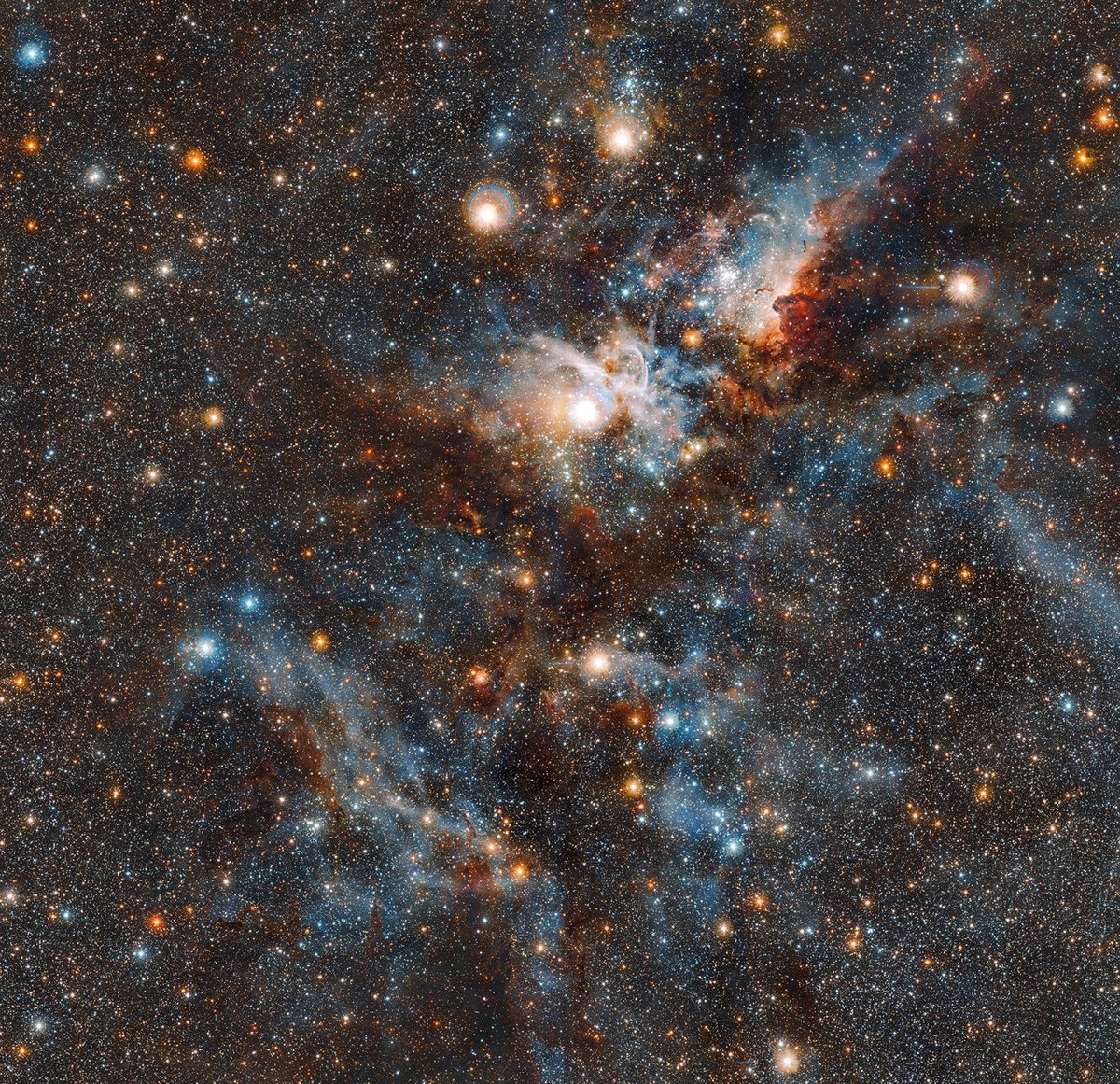Stunning high-res photo of a stellar nursery

Astronomers using an infrared telescope at the European Southern Observatory in Chile recently released an infrared photo of the Carina Nebula that shows the inner workings of the star factory “as never before”.
This spectacular image of the Carina nebula reveals the dynamic cloud of interstellar matter and thinly spread gas and dust as never before. The massive stars in the interior of this cosmic bubble emit intense radiation that causes the surrounding gas to glow. By contrast, other regions of the nebula contain dark pillars of dust cloaking newborn stars.
This is a massive image…the original is 140 megapixels (<- that’s a 344MB download). Phil Plait notes that it may contain about 1 million stars and gives a bit of background on what we’re looking at here:
The colors you see here are not what you’d see with your eye, since it’s all infrared. What’s shown as blue is actually 0.88 microns, or a wavelength just outside what your eye can see. Green is really 1.25 microns and red is 2.15, so both are well into the near-infrared.
Even in the infrared, a lot of gas and dust still are visible. That’s because there’s a whole bunch of it here. And it’s not just randomly strewn around; patterns are there when you look for them.
For example, in this subimage you can see long, skinny triangles of dust. These are formed when very thick clots of dust are near very luminous stars. The wind and fierce blast of ultraviolet light from the stars erode away at the clump and also flow around it. They’re like sandbars in a stream! This is the same mechanism that made the Pillars of Creation in the Eagle nebula, and they’re common in star-forming nebulae.





Stay Connected